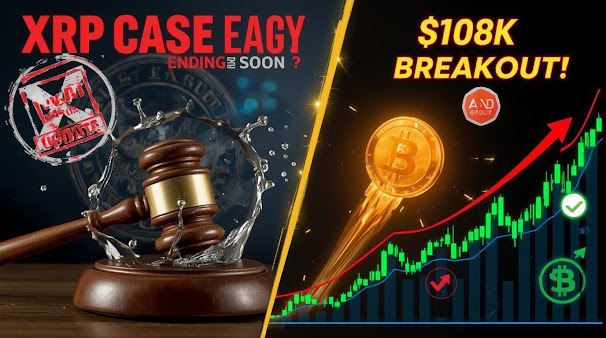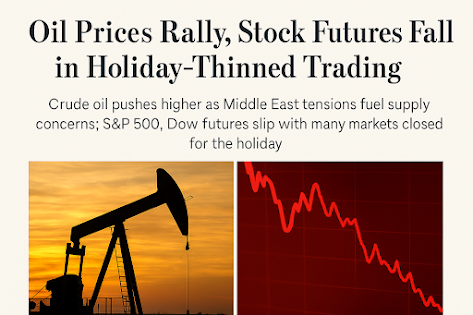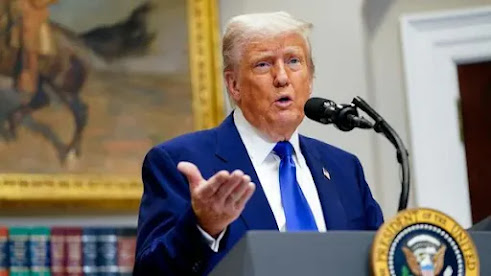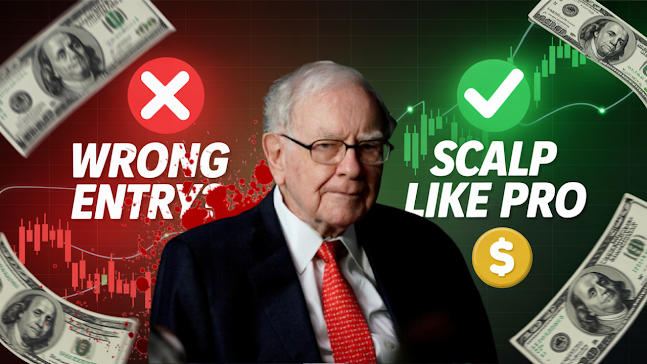
Dude, I Was Exactly Where You Are Right Now!
Okay, so you're thinking about jumping into stocks? Man, I get it - that feeling of being completely lost but also super excited. Like, everyone around you seems to be making money, and you're just sitting there wondering if you're missing out on something huge.
I'll be real with you - three years back, I was that guy who thought the stock market was some complicated thing only rich uncles and finance bros understood. My cousin kept posting screenshots of his "gains" on Instagram, and I'd be like... how the hell does this even work?
But here's the crazy part - today I'm writing this while sipping coffee that my dividend money basically paid for. My little ₹8,000 investment in HDFC Bank is now worth ₹18,500, and honestly, it still feels surreal sometimes.
So What Actually IS the Stock Market? (I Asked This Same Question)
Think about it like this - you know how in school, kids would trade cricket cards? "I'll give you two Dhonis for one Kohli!" That's basically the stock market, except instead of cricket cards, people are trading tiny pieces of actual companies.
When I buy shares of, say, Tata Motors, I literally own a microscopic slice of that entire company. If they launch a hit car and everyone loves it, my tiny piece becomes worth more. If they mess up and nobody buys their cars... well, my piece becomes worth less. Simple, right?
My first ever stock purchase was actually pretty embarrassing. I bought 3 shares of Reliance at ₹2,400 each with money I'd saved from not eating out for two months. I remember refreshing the app every 10 minutes like a maniac, watching the price go up and down by ₹5-10. I thought I was some sort of trading genius when it went up ₹50 in one day!
Why Don't Companies Just Keep All the Money for Themselves?
Great question! I wondered the same thing. Here's what I figured out:
Let's say you have an awesome startup idea - maybe you're building the next big food delivery app. You need cash to hire developers, rent offices, buy those fancy bean bags for the office (because every startup needs bean bags, obviously).
You've got two choices:
- Go to a bank and try to convince some serious uncle in a suit to lend you crores
- Tell thousands of regular people: "Hey, give me some money, and if my company does well, we'll both make profit!"
Option 2 is way cooler because everyone wins. The company gets money to grow, and regular folks like us get to potentially make money from their success.
How This Whole Circus Actually Works in India
We've basically got two main venues where this magic happens:
BSE (Bombay Stock Exchange) - This place is ancient, like seriously old. It's been around since 1875, which means it was doing stock trading when our great-great-grandfathers were probably still figuring out bicycles!
NSE (National Stock Exchange) - The newer, flashier one with all the modern tech. Most of the action happens here now.
Here's what blew my mind when I first learned this - when you decide you want to buy shares of, let's say, Infosys at ₹1,500 per share, there's some computer system that instantly finds someone somewhere in India who wants to sell Infosys at exactly ₹1,500. Like, within microseconds! It's faster than me deciding what to order on Zomato.
Why I Got Completely Hooked on This Stuff
Let me show you some numbers that literally changed how I think about money:
The Harsh Truth About My Savings Account
So I had ₹50,000 just sitting in my savings account, earning a massive 3% per year. That's ₹1,500 annually. Meanwhile, inflation is eating away at 6% every year, which means my money was actually becoming less valuable just by sitting there!
Then I started putting some of that money into decent stocks. My average return over the last two years? About 15%. That same ₹50,000 is now worth ₹67,000, and I literally did nothing except buy and forget about it.
Compound Interest is Absolutely Insane
This one example still gives me goosebumps. I put ₹12,000 into Asian Paints two years ago. The stock has grown, plus they give dividends twice a year. With everything reinvested, it's worth ₹19,800 now. That's my money literally making more money while I'm sleeping, working, or binge-watching Netflix.
I'm Basically Business Partners with Legends
When you own stocks, you're essentially in business with some of India's smartest people. I own tiny pieces of companies run by people like Ratan Tata and N.R. Narayana Murthy. It's like they're working for me (okay, technically I'm working for them since I own such tiny pieces, but you get the idea).
Myths That Almost Made Me Give Up (Don't Fall for These!)
"Stock market is basically gambling, yaar" My mom said this exact thing when I told her about my plans. But here's the difference - when I go to a casino and put money on black, I'm just guessing. When I buy HDFC Bank shares, it's because I've looked at their profits, their loan quality, their growth plans. There's actual research involved, not blind luck.
"You need to be super rich to even start" Total nonsense! I literally started with ₹5,000 that I had left over after buying a new phone. You can buy shares of solid companies like ITC for less than ₹400 each. That's cheaper than a decent dinner at a restaurant!
"Only CA and MBA types can make money" My barber makes more money from stocks than most of my engineering friends. He just buys shares of companies whose products he uses every day - Asian Paints (because he sees people painting houses), Maruti (because everyone's buying cars), etc. Simple strategy, great results.
"Stock market means day trading" Biggest misconception ever! Day trading is for people who like stress and losing money quickly. Real wealth building happens when you buy good companies and just... wait. Boring, but it works.
Stock Market Lingo (That Used to Confuse the Hell Out of Me)
Portfolio - Just your collection of stocks. Like your playlist, but for investments.
Dividend - Free money! Some companies share their profits with shareholders. My Hindustan Unilever shares give me ₹800 every six months just for owning them. It's like getting paid for doing absolutely nothing.
Market Cap - Total value of the company. HDFC Bank's market cap is around ₹8 lakh crores, which means that's what someone would pay to buy the entire bank.
P/E Ratio - Price to earnings ratio. Think of it as "how expensive is this stock?" Lower numbers usually mean better deals, but not always.
Bull vs Bear Market - Bull market = everyone's happy, prices going up. Bear market = everyone's panicking, prices falling. Guess which one is better for buying?
My Step-by-Step Journey (Including All the Awkward Parts)
Step 1: The Document Hunt
Ugh, paperwork! But you need these:
- PAN Card
- Aadhaar Card
- Bank account details
- Any utility bill for address proof
- Income proof (salary slip if you're working)
Pro tip: Keep digital copies ready. You'll upload them multiple times.
Step 2: Choosing a Broker (I Researched for Weeks!)
After reading tons of reviews and asking everyone I knew, I went with Zerodha because:
- Super cheap - only ₹20 per trade, no matter how much you buy/sell
- Their app doesn't suck
- Tons of free educational content
- No hidden charges that bite you later
Other solid options: Upstox (great app), Groww (beginner-friendly), Angel One (good research reports).
Step 3: Account Opening (Less Painful Than Expected)
You need two accounts:
- Demat Account - Think of it as a digital locker where your shares are stored
- Trading Account - The actual account you use to buy and sell
Most brokers handle both together. The whole thing took me about 48 hours to get approved.
Step 4: The Video Call Verification
Slightly awkward but necessary. Some person on video call checks your documents and makes sure you're a real human and not some sophisticated trading bot.
My Investment Strategy (Kept Simple Because I'm Not a Genius)
I follow what Warren Buffett calls the KISS principle - Keep It Simple, Stupid!
I Started with the Obvious Winners
Blue-chip stocks are like the Virat Kohlis of the stock market - proven performers you can count on.
My First Buys (Still Own All of These):
- Reliance Industries (₹15,000 invested) - Come on, everyone uses Jio!
- TCS (₹12,000) - These guys basically run IT for half the world
- HDFC Bank (₹10,000) - The bank that actually works properly
- Asian Paints (₹8,000) - Monopoly in house paints, and Indians love painting their homes
Diversification = Not Putting All Eggs in One Basket
I learned this lesson the expensive way. Initially, I went all-in on tech stocks because "tech is the future, bro!" Then the IT sector had a rough patch in 2022, and I watched 25% of my portfolio value disappear in two weeks.
Now I spread things out:
- Banking: 30% (HDFC Bank, ICICI Bank)
- IT: 25% (TCS, Infosys)
- Consumer goods: 20% (HUL, ITC, Asian Paints)
- Healthcare: 15% (Sun Pharma, Dr. Reddy's)
- Others: 10%
Monthly SIP in Stocks (My Secret Sauce)
Just like SIP in mutual funds, I invest ₹8,000 every month split across my favorite 5-6 stocks. Some months I buy when prices are high, some months when they're low. Over time, it averages out perfectly.
How I Sleep Well at Night Despite Market Volatility
Risk is everywhere, but smart people manage it instead of running away from it:
My Personal Risk Rules:
- Never put more than 10% in any single stock - Even if I'm super confident about it
- Always keep 6 months of expenses in savings - Never invest money I might need for emergencies
- Set stop-losses at 20% - If any stock falls 20% from its peak, I sell (learned this after some painful losses)
- Check portfolio once a week max - Daily checking will drive you crazy
The Different Ways You Can Lose Money:
- Company risk - What if Zomato suddenly shuts down? (That's why you diversify)
- Sector risk - What if people stop buying cars? (Auto stocks will crash)
- Market risk - Sometimes everything falls together (like March 2020)
But here's the thing - over long periods, good companies almost always bounce back.
My Biggest Mistakes (Learn from My Stupidity!)
1. Panic Selling During COVID
March 2020 was brutal. Market crashed 35%, and I lost my mind. Sold almost everything at massive losses because I thought the world was ending. Those same stocks recovered and doubled within 18 months. Cost me about ₹45,000 in potential gains.
2. Following Random Tips
My gym buddy gave me a "guaranteed winner" stock tip. Put ₹10,000 in some small company I'd never heard of. Lost 60% in three months. Now I only invest in companies I understand and research myself.
3. Trying to Time the Perfect Entry
Waited for 4 months to buy Hindustan Unilever because I thought it was "too expensive" at ₹2,200. Meanwhile, it went to ₹2,800. Lesson learned - time IN the market beats trying to time THE market.
4. Trading Like a Maniac
First six months, I was buying and selling constantly, thinking I was some sort of trading genius. Made about 47 transactions and ended up losing money because of all the brokerage fees. Now I buy and hold for years.
My Current Portfolio (The Good, Bad, and Ugly)
Total invested so far: ₹3,50,000 Current value: ₹4,95,000 Total returns: 41% (over 2.5 years)
My Top Performers:
- HDFC Bank (invested ₹45,000, now worth ₹78,000) - My superstar
- Asian Paints (invested ₹25,000, now worth ₹41,000) - Steady grower
- TCS (invested ₹40,000, now worth ₹58,000) - Dividend machine
- Reliance (invested ₹50,000, now worth ₹67,000) - Diversification king
My Disappointments:
- ITC (invested ₹20,000, now worth ₹18,500) - Cigarette bans are hurting
- Infosys (invested ₹30,000, now worth ₹31,000) - Barely moved in 2 years
Newer Additions:
- ICICI Bank, Sun Pharma, Maruti Suzuki - Building positions slowly
The best part? I get dividends totaling about ₹12,000 annually now. That's basically free money for just owning these stocks!
Tools That Actually Helped Me (Not Boring Finance Jargon)
Free Stuff I Use Daily:
- Screener.in - Shows all company financials in simple format
- Moneycontrol app - Quick news and price updates
- Company annual reports - Boring but necessary reading
- YouTube channels - "Pranjal Kamra" and "Asset Yogi" are gold
Paid Tools Worth the Money:
- Tijori Finance (₹2,000/year) - Detailed company analysis
- Economic Times Prime (₹999/year) - Premium market insights
Books That Changed My Thinking:
- "Coffee Can Investing" by Saurabh Mukherjea - This book is like a cheat code for Indian investing
- "The Psychology of Money" by Morgan Housel - Helps understand your own behavior
- "One Up On Wall Street" by Peter Lynch - Learn to find good companies around you
When Do I Actually Sell? (Hardest Decision Ever)
Selling is way harder than buying. Here's my framework:
I Sell When:
- Company fundamentals get permanently worse (rising debt, falling profits for 2+ years)
- I need money for major life goals (bought my bike by selling some TCS)
- Stock becomes stupidly overvalued (P/E above 50 for regular companies)
- I find a much better opportunity
I Don't Sell When:
- Stock falls 15-20% in a few days (happens all the time)
- Scary news headlines (media loves drama)
- I made a quick 30-40% profit (good companies can grow for years)
- Someone on TV says "market will crash"
Tax Stuff (Boring But Important for Your Wallet)
Getting this right saves you thousands:
Short-term vs Long-term:
- Hold less than 1 year: Pay 15% tax on profits (ouch!)
- Hold more than 1 year: Pay 10% tax on profits above ₹1 lakh per year
My strategy: Try to hold everything for over a year. Plus, I get ₹1 lakh in gains completely tax-free every year!
Pro Tip:
I time my sales to use up the ₹1 lakh tax-free limit every financial year. Smart planning can save you 10-15% in taxes.
My Weekly Routine (Doesn't Take Over My Life)
Monday morning (10 minutes with breakfast):
- Quick scan of weekend news affecting my companies
- Check if any results were announced
Wednesday evening (15 minutes):
- See how my stocks are doing
- Add to wishlist if I spot good buying opportunities
Sunday (45 minutes total):
- Read quarterly results of companies I own
- Research one new company to potentially invest in
- Plan next month's investments
Monthly:
- Review entire portfolio performance
- Add fresh money to best opportunities
- Read one investment book/long article











